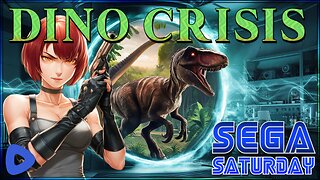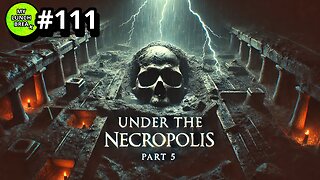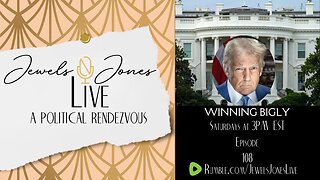Premium Only Content

Effective Blogging Strategies for Building an Audience (Updated Insights)
In the vast world of digital content, blogging remains a powerful tool for individuals and businesses alike. Yet, creating a blog that attracts and retains a dedicated audience requires more than just writing skills. It’s a multifaceted endeavor that involves strategic planning, audience understanding, and ongoing engagement. In this article, we’ll explore effective blogging strategies that can help you build and grow a loyal audience.
1. Define Your Niche and Audience
The first step in building a successful blog is to define your niche and understand your target audience. A well-defined niche sets you apart from the vast sea of general content and positions you as an authority in a specific area. Whether it’s travel, technology, personal finance, or lifestyle, your niche should align with both your interests and the needs of your audience.
To identify your target audience, ask yourself: Who are they? What are their interests, challenges, and goals? Tools like Google Analytics, social media insights, and audience surveys can provide valuable data. Understanding your audience’s demographics, preferences, and behavior helps tailor your content to their needs, making it more likely that they’ll engage with and share your posts.
2. Create High-Quality, Valuable Content
Content is the cornerstone of any successful blog. High-quality content is not only well-written and free of errors but also provides value to your readers. This means your posts should offer solutions, insights, or entertainment that resonates with your audience.
One effective approach is to focus on providing actionable tips and in-depth guides. For example, if you’re running a finance blog, detailed posts about budgeting techniques or investment strategies can attract readers seeking practical advice. Similarly, if your blog is about travel, sharing comprehensive guides on destinations or travel hacks can draw in avid travelers.
Incorporate a mix of content types, such as how-to articles, listicles, opinion pieces, and personal stories, to keep your blog dynamic and engaging. Visual content like images, infographics, and videos can also enhance the readability of your posts and make them more shareable.
3. Optimize for SEO
Search Engine Optimization (SEO) is crucial for driving organic traffic to your blog. SEO involves optimizing your content and website structure to improve your rankings in search engine results pages (SERPs). Here are some key SEO practices:
Keyword Research: Use tools like Google Keyword Planner or Ahrefs to identify relevant keywords related to your niche. Incorporate these keywords naturally into your blog posts, titles, and meta descriptions.
On-Page SEO: Ensure your posts have optimized titles, headings, and meta descriptions. Use keywords in a way that enhances readability rather than stuffing them into your content.
Quality Backlinks: Earn backlinks from reputable sites within your niche. This not only boosts your credibility but also improves your search engine rankings.
Mobile Optimization: Ensure your blog is mobile-friendly. With a growing number of users accessing content from mobile devices, a responsive design is essential for user experience and SEO.
4. Promote Your Blog Through Social Media
Social media platforms are invaluable tools for promoting your blog and connecting with your audience. Each platform offers unique opportunities for engagement and visibility.
Choose the Right Platforms: Not all social media platforms will be relevant to your niche. Focus on the platforms where your target audience is most active. For instance, Instagram and Pinterest might be ideal for visual content, while LinkedIn is better suited for professional or B2B content.
Engage with Your Audience: Social media is not just about broadcasting your content; it’s also about engaging with your followers. Respond to comments, participate in discussions, and share user-generated content to build a community around your blog.
Utilize Paid Advertising: Platforms like Facebook and Instagram offer targeted advertising options that can help you reach a broader audience. Experiment with paid promotions to increase visibility and drive traffic to your blog.
5. Build an Email List
An email list is one of the most effective tools for building and maintaining a relationship with your audience. Unlike social media, where algorithms can limit your reach, email allows you to communicate directly with your subscribers.
Create Lead Magnets: Offer valuable resources such as e-books, checklists, or exclusive content in exchange for email subscriptions. This not only provides immediate value to your subscribers but also incentivizes them to sign up.
Send Regular Newsletters: Keep your audience engaged by sending regular newsletters with updates, new blog posts, and curated content. Make sure your emails are well-designed and provide value to encourage opens and clicks.
Segment Your List: Segment your email list based on subscriber interests and behavior. This allows you to send targeted content that is more likely to resonate with different segments of your audience.
6. Collaborate with Other Bloggers and Influencers
Collaborations can significantly expand your reach and introduce your blog to new audiences. Partnering with other bloggers or influencers in your niche can take various forms, including guest posts, joint webinars, or social media shoutouts.
Guest Posting: Write guest posts for other reputable blogs within your niche. This not only helps you reach a wider audience but also builds backlinks to your blog, which can enhance your SEO.
Influencer Partnerships: Collaborate with influencers who align with your brand and values. Influencers can help amplify your content and drive traffic to your blog through their established followings
Read the full blog post here https://www.gerardyadgg.com/2024/09/effective-blogging-strategies-for.html
-
 6:10:21
6:10:21
JdaDelete
1 day ago $12.44 earnedDino Crisis - Sega Saturday
106K4 -
 23:22
23:22
MYLUNCHBREAK CHANNEL PAGE
1 day agoUnder The Necropolis - Pt 5
91.5K52 -
 2:26:11
2:26:11
Jewels Jones Live ®
2 days agoWINNING BIGLY | A Political Rendezvous - Ep. 108
153K46 -
 2:04:49
2:04:49
Bare Knuckle Fighting Championship
4 days agoBKFC FIGHT NIGHT MOHEGAN SUN FREE FIGHTS
77K7 -
 25:09
25:09
BlackDiamondGunsandGear
14 hours agoYou NEED to be Training For Whats to Come
53.1K11 -
 20:03
20:03
Sideserf Cake Studio
20 hours ago $1.85 earnedA HUNGRY HUNGRY HIPPOS CAKE THAT ACTUALLY WORKS?
50.6K14 -
 23:51
23:51
marcushouse
21 hours ago $1.67 earnedStarship’s Next Move Is Coming Sooner Than You Think!
36.1K6 -
 22:24
22:24
The Finance Hub
1 day ago $11.76 earnedBREAKING: JOE ROGAN JUST DROPPED A MASSIVE BOMBSHELL!!!
40K37 -
 55:02
55:02
PMG
17 hours ago $1.02 earnedHannah Faulkner and Miriam Shaw | Moms on A Mission
27.9K1 -
 1:21:05
1:21:05
I_Came_With_Fire_Podcast
1 day ago"Veteran Health, Military Culture, and American Exceptionalism" with Matt Kenney
94.5K21